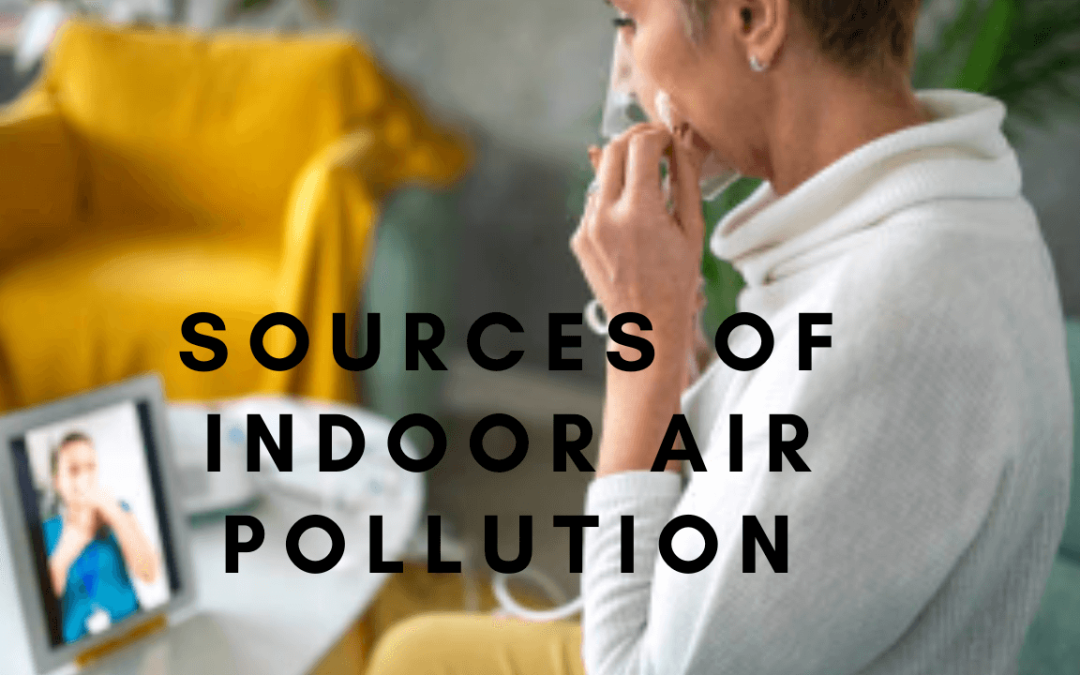Indoor air pollution is a significant concern, as it directly affects the health and well-being of individuals who spend a substantial amount of time indoors. In developed countries, where people can spend up to 90% of their time indoors, understanding and addressing indoor air pollution becomes crucial.
Various sources contribute to indoor air pollution, encompassing biological, chemical, and environmental factors. In this blog post, we aim to delve into these sources, shedding light on how they impact our health. By comprehending the origins of indoor air pollution, we can take proactive measures to minimize our exposure to harmful contaminants and safeguard our well-being.
Exposure to indoor air pollution can manifest in a range of symptoms, including irritation of the eyes, nose, and throat, headaches, dizziness, fatigue, and respiratory issues. Prolonged exposure to indoor air pollution can even lead to severe health complications such as cancer and chronic respiratory diseases.
To enhance the quality of the air we breathe and mitigate the risk of adverse health effects, it is essential to adopt measures that reduce indoor air pollution. In the upcoming sections, we will explore the diverse sources of indoor air pollution and discuss actionable steps to minimize our exposure.
Biological Sources of Indoor Air Pollution
Biological sources of indoor air pollution are of great concern as they directly impact the health and well-being of individuals. These sources encompass various living organisms, including dust mites, pet dander, pests, mold, bacteria, and viruses. In warm and humid environments, these organisms thrive, posing a range of health problems when inhaled.
Dust mites, microscopic insects that feed on human and animal skin flakes, can trigger allergic reactions in sensitive individuals due to their droppings and body parts becoming airborne. Similarly, pet dander, consisting of tiny skin flakes, fur, or feathers shed by animals, can provoke allergies and asthma symptoms in some people.
Pests like cockroaches and rodents also contribute to indoor air pollution. Their droppings and urine can elicit allergic reactions and exacerbate asthma symptoms. Furthermore, their presence raises the risk of infectious diseases.
Mold and bacteria serve as additional biological sources of indoor air pollution. Flourishing on damp surfaces like walls, ceilings, and carpets, release spores and particles into the air. Exposure to mold and bacteria can result in respiratory problems and infections.
Lastly, viruses and other microorganisms can also be present in indoor air, particularly in crowded spaces such as schools and offices. These airborne pathogens can cause infectious diseases such as the flu, colds, and COVID-19.
To mitigate exposure to biological sources of indoor air pollution, it is crucial to maintain clean and dry indoor spaces, utilize air filters and purifiers, and control humidity levels. Regular cleaning practices, effective pest control measures, and adequate ventilation significantly reduce the risk of exposure to biological contaminants.
Chemical Sources of Indoor Air Pollution
Chemical sources of indoor air pollution pose a significant concern, as they can have detrimental effects on both human health and the environment. These sources encompass a wide range of substances found in building materials, cleaning products, furniture, and various household items. Exposure to these chemicals can lead to respiratory problems, headaches, dizziness, and nausea.
One common source of indoor air pollution is volatile organic compounds (VOCs), emitted by many building materials, such as paints, adhesives, and carpets, as well as cleaning and personal care products. We need to be aware of these VOC emissions, as they can have adverse effects not only on human health but also on the health of trees and plants in indoor environments. VOCs can cause eye, nose, and throat irritation, and in high concentrations, they can lead to more serious health problems.
Formaldehyde is another chemical commonly found in building materials and furniture, such as particle board, plywood, and insulation. We must be particularly cautious about formaldehyde emissions, as it can negatively impact the health of trees and vegetation. Exposure to formaldehyde can cause respiratory problems, skin irritation, and even cancer. Proper selection of building materials and furnishings with low formaldehyde emissions is crucial in maintaining a healthy indoor environment.
We have a responsibility to promote indoor air quality and mitigate the impact of chemical sources of pollution. Encouraging the use of low-emission building materials and furnishings, selecting cleaning and personal care products with low VOC content, and promoting proper ventilation are important steps we can take. Additionally, educating homeowners and property managers about the importance of regular maintenance and proper disposal of household chemicals and hazardous materials is crucial in reducing exposure to harmful chemicals. By prioritizing these measures, we can contribute to healthier indoor environments for both humans and the natural world.
Environmental Sources of Indoor Air Pollution

Environmental sources of indoor air pollution are a significant concern, as they can have adverse effects on both human health and the surrounding ecosystem. These sources include outdoor air pollution, radon gas, and secondhand smoke, all of which can compromise indoor air quality and increase the risk of various health problems.
Outdoor air pollution can infiltrate buildings through openings such as windows, doors, and ventilation systems, posing a threat to occupants and vegetation alike. We understand the detrimental impact of outdoor air pollution on the health and vitality of trees and plants. Vehicle exhaust, industrial emissions, and natural sources like pollen and dust contribute to outdoor air pollution, which can cause respiratory problems, heart disease, and even cancer.
Radon gas, a radioactive gas naturally found in soil and rock, is another environmental source of indoor air pollution. It can permeate buildings through cracks in the foundation and walls, leading to potential lung cancer risks when inhaled in high concentrations. Play a crucial role in advocating for radon testing and mitigation strategies to safeguard the well-being of both humans and the surrounding natural environment.
Secondhand smoke is yet another environmental source of indoor air pollution that we must address. Exposure to secondhand smoke can result in respiratory problems, heart disease, and cancer, with particularly harmful effects on children and pregnant women. Promoting smoke-free environments and advocating for smoking restrictions indoors are important steps in reducing the impact of secondhand smoke on indoor air quality.
We have a responsibility to mitigate the impact of environmental sources of indoor air pollution. Properly sealing and ventilating indoor spaces, utilizing air filters and purifiers to remove contaminants, and advocating for smoke-free environments are essential measures.
Effects of Indoor Air Pollution on Health
Exposure to indoor air pollution poses significant concerns, as it can have detrimental effects on both human health and the well-being of the surrounding natural environment. The range of health problems associated with indoor air pollution includes respiratory problems, heart disease, cancer, and neurological disorders. The severity of these effects depends on the type and concentration of contaminants, as well as individual susceptibility.
In the short term, exposure to indoor air pollution can lead to immediate symptoms such as headaches, dizziness, fatigue, and irritation of the eyes, nose, and throat. However, the consequences can be far more serious with long-term exposure. Prolonged exposure to indoor air pollution can contribute to chronic respiratory problems like asthma and chronic obstructive pulmonary disease (COPD), as well as increase the risk of heart disease and cancer.
Special attention must be given to the most vulnerable groups, including children, the elderly, and individuals with preexisting health conditions. Pregnant women should also be mindful of the potential negative effects of indoor air pollution on fetal development, which can lead to an increased risk of preterm birth and low birth weight.
We advocate for measures to reduce the risk of health problems associated with indoor air pollution. This includes improving indoor air quality through proper ventilation, regular cleaning practices, and the use of air filters and purifiers. Additionally, it is crucial to minimize or avoid exposure to known sources of indoor air pollution, such as tobacco smoke and household chemicals. Seeking guidance and treatment from healthcare professionals is essential if experiencing symptoms related to indoor air pollution.
By prioritizing the improvement of indoor air quality, can contribute to the well-being of both humans and the natural environment. Together, we can foster healthier indoor environments and ensure a harmonious coexistence between human activities and the surrounding ecosystem.
Ways to Improve Indoor Air Quality

Improving indoor air quality is of great importance, as it not only benefits human health but also contributes to the overall well-being of the surrounding natural environment. Here are some effective strategies to enhance indoor air quality:
Proper ventilation: Adequate ventilation plays a crucial role in improving indoor air quality. It is recommended to open windows and doors to facilitate fresh air circulation. Additionally, utilizing exhaust fans in bathrooms and kitchens helps eliminate moisture and pollutants effectively.
Regular cleaning: Consistent cleaning practices are essential for removing pollutants and allergens from indoor spaces. Engage in regular dusting and vacuuming, and opt for a vacuum cleaner equipped with a HEPA filter to capture fine particles efficiently.
Air filters and purifiers: Utilizing air filters and purifiers is beneficial in removing contaminants from the air. Select filters with high-efficiency ratings and ensure regular cleaning or replacement of filters to maintain their effectiveness.
Choose low-emission products: Opt for building materials, furnishings, cleaning products, and personal care items that have low emissions of pollutants like volatile organic compounds (VOCs) and formaldehyde.
Avoid indoor smoking: Indoor smoking introduces a wide range of harmful pollutants into the air. If you are a smoker, it is crucial to refrain from smoking indoors and choose designated outdoor areas instead.
Radon test: Conducting regular radon testing in indoor spaces is vital for identifying potential health risks and initiating remediation measures if necessary.
Introduce indoor plants: Indoor plants can contribute to improving air quality by absorbing pollutants and releasing oxygen. Spider plants, snake plants, and peace lilies are among the best choices for enhancing indoor air quality.
Conclusion
In summary, addressing indoor air pollution is critical for health and environmental well-being. We’ve examined various pollution sources—biological, chemical, and environmental—and their adverse effects. Symptoms ranging from irritation to serious health issues highlight the importance of proactive measures like enhancing ventilation, using air purifiers, and keeping indoor spaces clean.
Adopting strategies to reduce exposure to pollutants, such as choosing low-emission products and maintaining proper indoor hygiene, can significantly improve our indoor air quality. This not only protects our health but also contributes to a more sustainable environment.
Understanding the interconnectedness of indoor and outdoor air quality, we must also focus on reducing outdoor pollution sources and ensuring smoke-free indoor spaces. Addressing these factors is essential for protecting vulnerable populations and promoting a healthier, more sustainable future.
Ultimately, improving indoor air quality requires collective action and awareness. By implementing healthier practices and advocating for cleaner air policies, we can create safer, more breathable environments for ourselves and future generations.

